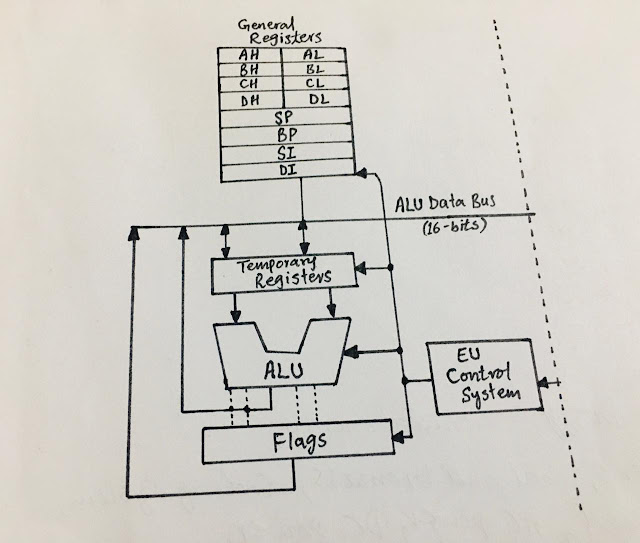AMBA Artchitecture | ARM Devoloper
What are AMBA, Types, instructions, and Conditional practice:
Introduction of AMBA:
AMBA (Advanced Microcontroller Bus Architecture) is an integrated platform for connecting and managing blocks that work on system-on-chip (SoC) construction. And it's normal.
It provides assistance and facilitates the development of multiple processor designs where controllers are connected to a large number and also to building buildings by bus. Since the inception of AMBA, its size and use have been accelerated on other devices and not just microcontroller devices. Nowadays, AMBA has been used with a large number of ASIC and SoC component devices as processor applications depicting many portable mobile devices. AMBA is a structured and proposed building for ARM Ltd.
AMBA Bus Types:
In 1996 AMBA was first developed by ARM Ltd. The main types of AMBA buses were originally Advanced System Bus (ASB) and Advanced Peripheral Bus (APB). Later, in its second version AMBA2 in 1999, ARM introduced the Bus Highly-performance Bus (AHB) with a one-clock protocol as the new version of AMBA.
APB is an AMBA type designed for low-frequency and low-bandwidth systems such as 32-bits. You can also define it as it is designed for low accessibility with low bandwidth. Their examples can be an assembly register for peripheral systems. This bus and AHB has the same address category and data category but it is a very low-density list, with very low problems due to the lack of explosions.
ASB is used to
connect system modules with high performance and supports data transfer when in
Burst mode. This system bus is commonly used in ARM these days as well.
AHB performs many
functions such as supporting data transfer in blast mode and supporting
transaction processing on various buses to further assist the bus inefficient
operation. AHB has a lot of performance capabilities instead of ASB in ARM
systems that work best as a core processor ARM1020e.
ARM Instruction Set:
64-bit and 32-bit have various risk factors such as load /
store structure (actually a command building structure) that separates or
divides commands into two distinct categories such as ALU functions (commands
that you can find between registers only) and memory access (loading commands)
and store-formations that distinguish them between memory and registers.
Initially, the original version of ARM architecture did not
have support for incompatible memory access. Later other formats such as ARMv6
other than microcontroller versions began to support certain limitations such
as it does not have a certified atom, uninstalled memory up to one name and
upload/store commands.
Unique 16x32bit form (including counter, stack
pointer, and link register).
A range of fixed orders of 32bits to reduce the
specification and installation of the pipe, at a discounted price. Later, a set
of six commands added 16-bit commands and code expansion.
One clock cycle performance.
Conditional execution of multiple orders reduces the overhead of
the branch and compensates for the absence of branch forecasts on the original
chips.
Arithmetic Instructions:
Arithmetic commands modify status codes only if you wish.
A 32-bit barrel shifter can be used without penalty for
working with multiple arithmetic commands and address counts.
ARM includes complete mathematical functions for addition,
subtraction, and multiplication; other types of construction also support
partitioning operations.
ARM supports 32-bit x 32-bit duplication with 32-bit results
or 64-bit results, although the Cortex-M0 / M0 + / M1 cores do not support
64-bit results. Some ARM cores also support 16-bit x 16-bit and 32-bit x 16-bit
duplicates.
The architecture of ARMv7-M and ARMv7E-M always incorporates
partition instructions.
The architecture of ARMv7-R always incorporates a partition
commands into a six-bit tutorial set, but optionally on its 32-bit tutorial
set.
ARMv7-A voluntary construction includes partition commands.
The commands may not be used, or only used in a set of six commands, or used in
both sets of six commands and ARM, or used when Virtualization Extensions is
installed.
Conditional Practices:
Almost all ARM commands have a conditional performance
feature called predication, which is used with a 4-bit status code selector
(adverb). To allow the unconditional practice, one of the four-bit codes makes it a
regular instruction. Most other CPU builds have status codes only for branch
commands.
Although the proclamation takes four of the 32 pieces in the
instructional code, and thus greatly reduces the available writing pieces to
remove space from memory access commands, it avoids branch commands when
generating code for small statements if. In addition to issuing branch orders
itself, this limits download / unload / unloading pipe for only one round of
perforated orders.



Comments
Post a Comment
if you have any doubt, please let me know.